Iran has seen an increase in the number of annual visitors over the past few years, and the lifting of economic sanctions is sure to attract even more. Home to one of the oldest civilizations, Iran has no shortage of sites to see. When it comes to UNESCO World Heritage Sites, it boasts an impressive 25 registered cultural sites. Palaces, bazaars, places of worship, ancient water systems, and remnants of the great Persian Empire dominate this list. The Culture Trip explores the top 10 UNESCO World Heritage Sites in Iran. When you travel to Iran, you will be treated to the most breathtaking natural and man-made structures that you will find throughout the Iran. In our tours you can truly see and absorb all the glory of Iran and touch the civilization and cultures of Iran. With 25 UNESCO World Heritage sites , Iran is the best place for visiting .You just text us and book your tour and travel to Iran and we allocate , organize and prepare the best for you to enjoy your trip and tour in Iran. Here we listed Iran UNESCO World Heritage Sites for you to become familiar.
UNESCO IRAN: Useful Information
UNESCO (United Nations Educational, Scientific and Cultural Organization)
Founded in 1945, this specialized agency is responsible for coordinating international cooperation in education, science, culture and communication.
UNESCO World Heritage Sites in Iran
These are the sites in Iran that are recognized by UNESCO as world heritage sites as they play important roles in building the country’s cultural and national heritage.
How World Heritage Sites are Determined
World Heritage Sites are determined based on their outstanding universal value. To be listed, a place must meet at least 1 out of the 10 criteria set by UNESCO.

Iranian Sites registered in UNESCO
Cultural Sites (25)
1. Armenian Monastic Ensemble (2008)
It is located 15 Km northwest of Julfa (Northwest of Iran) in a deep canyon along the Aras River on the Iranian side of the border between Azerbaijan and Iran. This site protects the rich culture of Armenian Christians. It was built in the 9th century and was rebuilt in the Safavid era after several earthquakes damaged it.
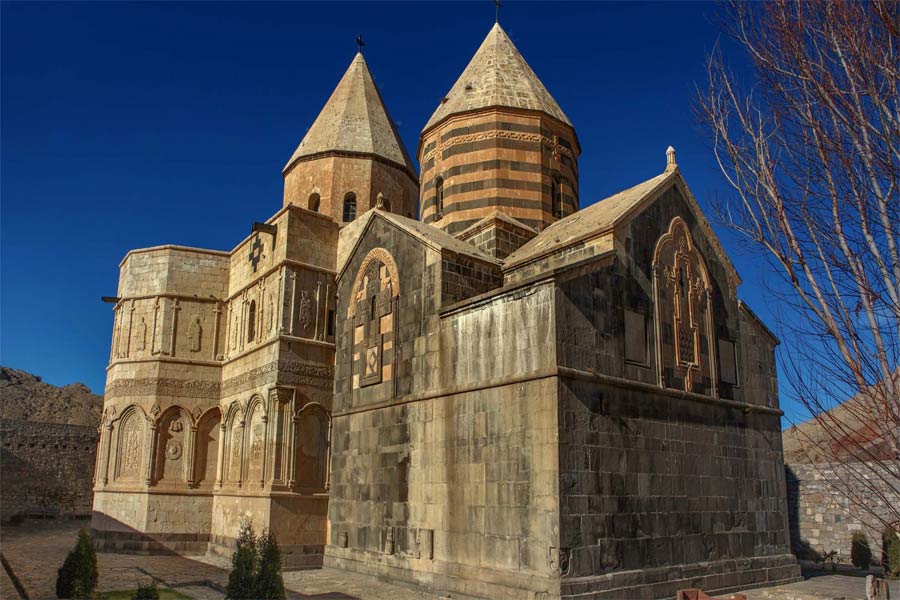
2. Bam and its cultural Landscape (2004)
Bam is the world's largest mud brick building near the city of Bam in Kerman province in southeastern Iran and its Cultural Landscape is an outstanding example of a Central Asian trading settlement. The town had its heyday from the 7th to 11th centuries. The ancient citadel of Arg-e Bam probably has a history dating back around 2000 years ago but most buildings were built during the Safavid dynasty Bam was almost completely destroyed in an earthquake on December 26 2003.
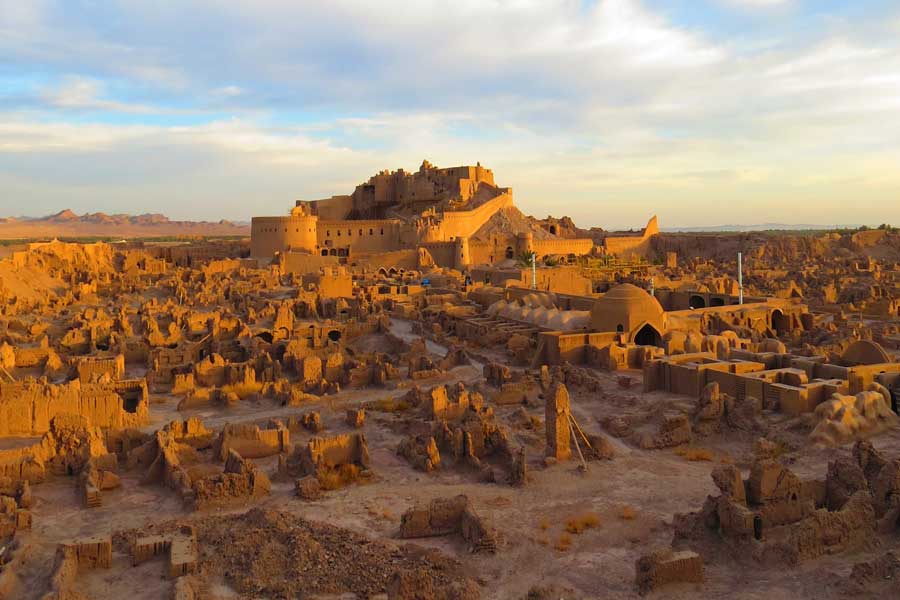
3. Bisotun (2006)
It is located along a historical trade route in the Kermanshah Province of Iran. Its primary monument is the Bisotun Inscription made in 521 BC by Darius I the Great when he conquered the Persian throne. The inscription is written in 3 languages: Elamite Babylonian and Old Persian. It is to cuneiform script what the Rosetta Stone is to Egyptian hieroglyphs: the document most crucial in the decipherment of a previously lost script. A British army officer Sir Henry Rawlinson had the inscription transcribed in two parts in 1835 and 1843.
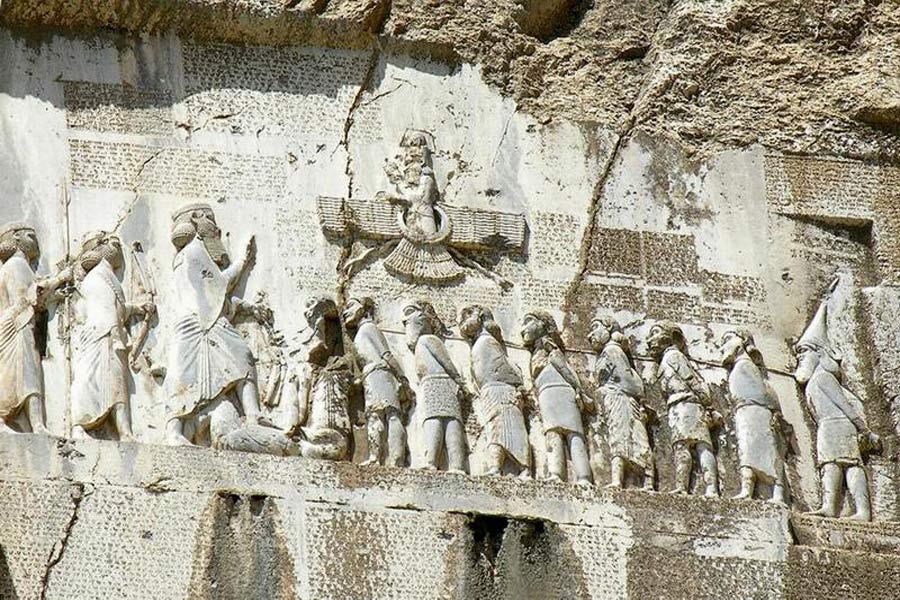
4. Cultural Landscape of Maymand (2015)
Meymand is a very ancient village which is located near Shahr-e Babak city in Kerman Province Iran.The Cultural Landscape of Maymand covers a dry desert valley in Central Iran which is home to semi-nomadic people. They practice a three phase transhumance system. In winter they live in troglodytic houses carved out of soft stone rocks. The designated area contains houses animal shelters water collection points agro-pastoral systems and rock-art.
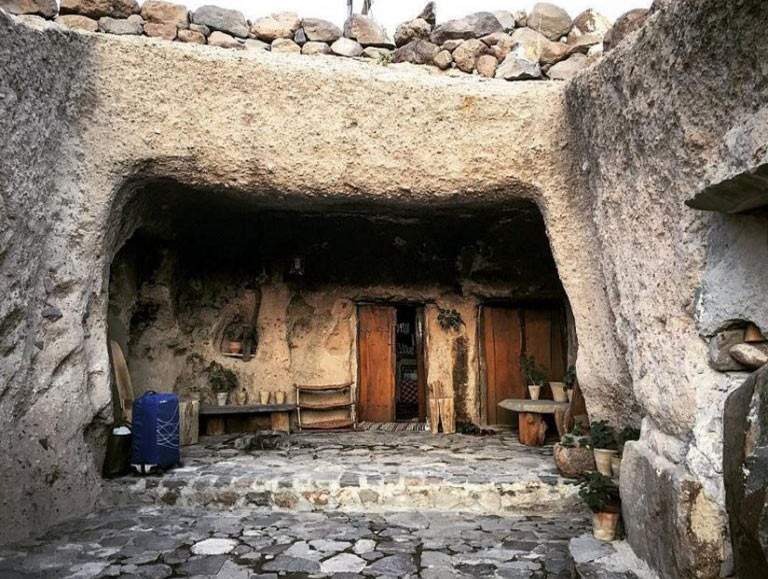
5. Golestan Palace (2013)
Golestan Palace Tehran relic of a historic palace residence of the kings of the Qajar dynasty and the most beautiful and oldest buildings in the capital of the bicentenary of the counts. The palace buildings were built at different times. Its name is derived from the Hall of Golestan in building output.The site comprises 8 palace complexes around a garden. Notable features include: Marble Throne (Takht-e marmar)Hoze Khaneh a summer chamber with cooling systemTalar-e Aineh (Hall of Mirrors)Shams-ol-Emareh (Edifice of the Sun) Several museums.
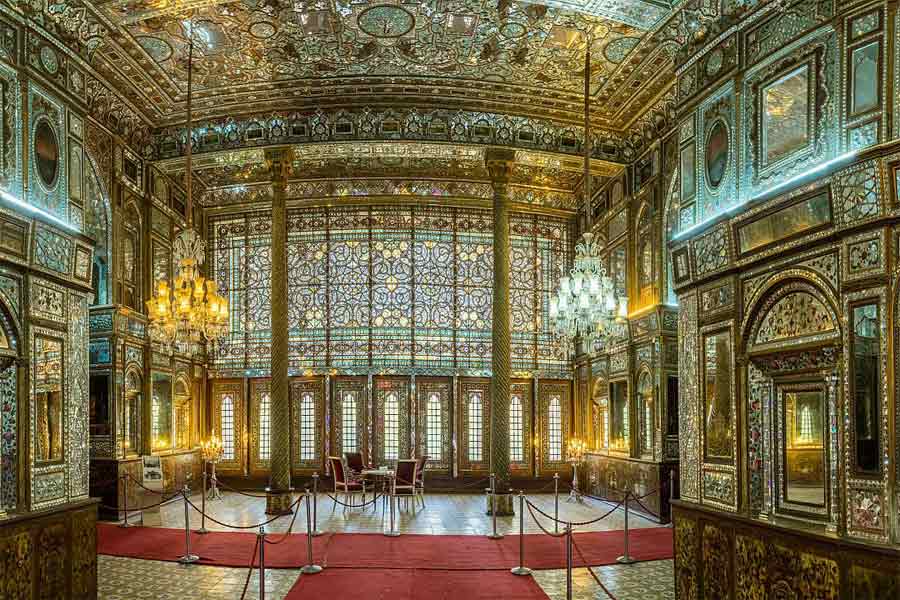
6. Gonbade Qabus (2012)
Gonbad-e Qabus is a monumental tomb tower and is located in Gonbad-e Qabus city Golestan province in north of iran.The architectural style is a secret way and the building is one of the world's tallest brick tower all over the world . The 53 metres high tower was constructed using unglazed fired bricks. Its form is cylindrical with a conical roof and standing on a stellar plan. It became the prototype for the construction of tomb towers in the history of Islamic Architecture. The tower is the only part that remains of the historic town of Jorjan. It stands on a domed hill in a park in the center of the current city Gonbad-e Qabus.

7. Historic City of Yazd (2017)
The City of Yazd is located in the middle of the Iranian plateau, 270 km southeast of Isfahan, close to the Spice and Silk Roads. It bears living testimony to the use of limited resources for survival in the desert. Water is supplied to the city through a qanat system developed to draw underground water. The earthen architecture of Yazd has escaped the modernization that destroyed many traditional earthen towns, retaining its traditional districts, the qanat system, traditional houses, bazars, hammams, mosques, synagogues, Zoroastrian temples and the historic garden of Dolat-abad.
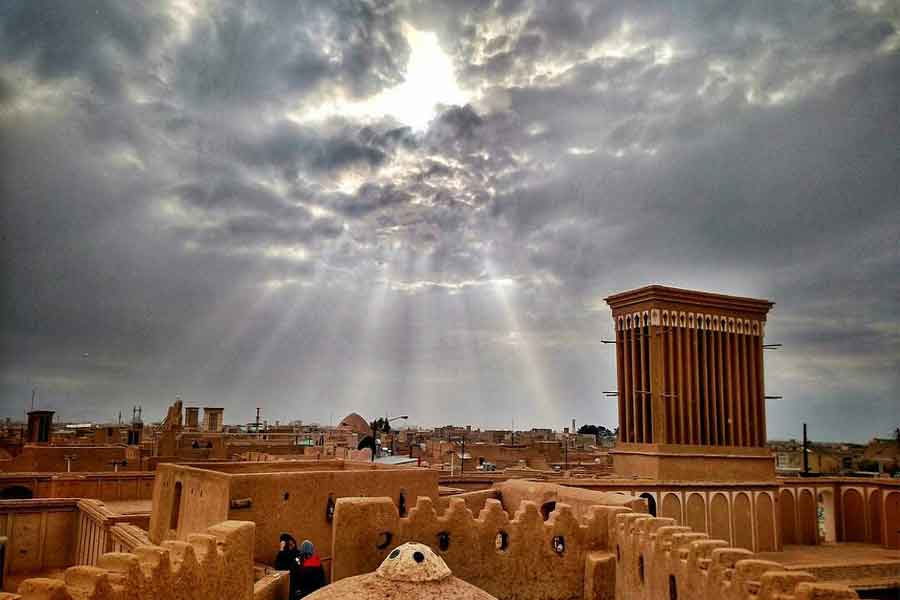
8. Masjede Jame of Isfahan (2012)
Masjed-e Jame of Isfahan represents a condensed history of Iranian Architecture. It displays architectural styles of different periods in the country's Islamic architecture. The mosque was built in the four-iwan architectural style placing four gates face to face. It later became a prototype for mosque and dome design. Located in the historic centre of Isfahan it is the oldest Friday mosque in Iran. It was developed from the 9th century onwards.
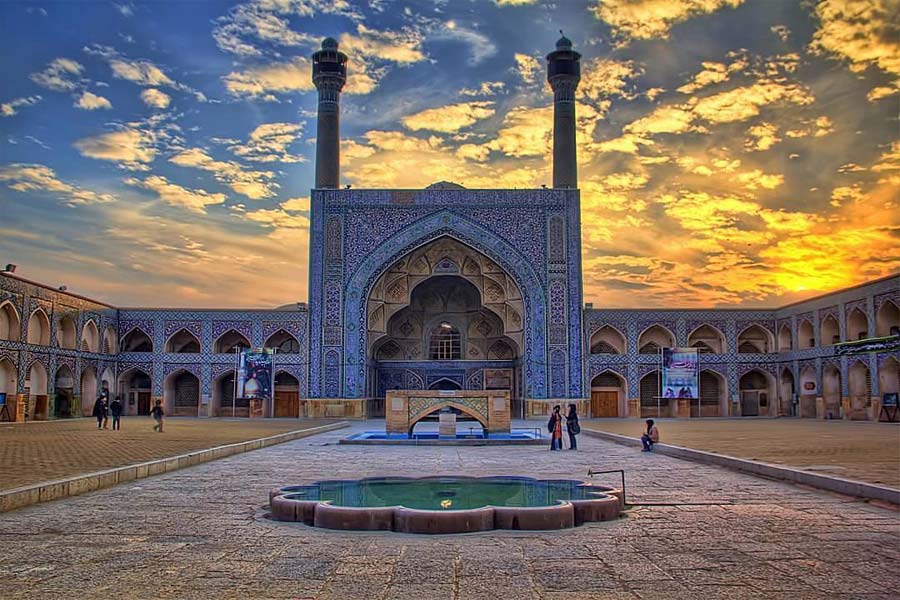
9. Meidan Imam Isfahan (1979)
Meidan Imam Isfahan is one of the largest city squares in the world and Built by Shah Abbas I the Great at the beginning of the 17th century. The square is surrounded by important historical buildings from the Safavid era. The Shah Mosque is situated on the south side of this square. On the west side you can find Ali Qapu Palace. Sheikh Lotf Allah Mosque is situated on the eastern side of this square and the northern side opens into the Isfahan Grand Bazaar. They are an impressive testimony to the level of social and cultural life in Persia during the Safavid era.
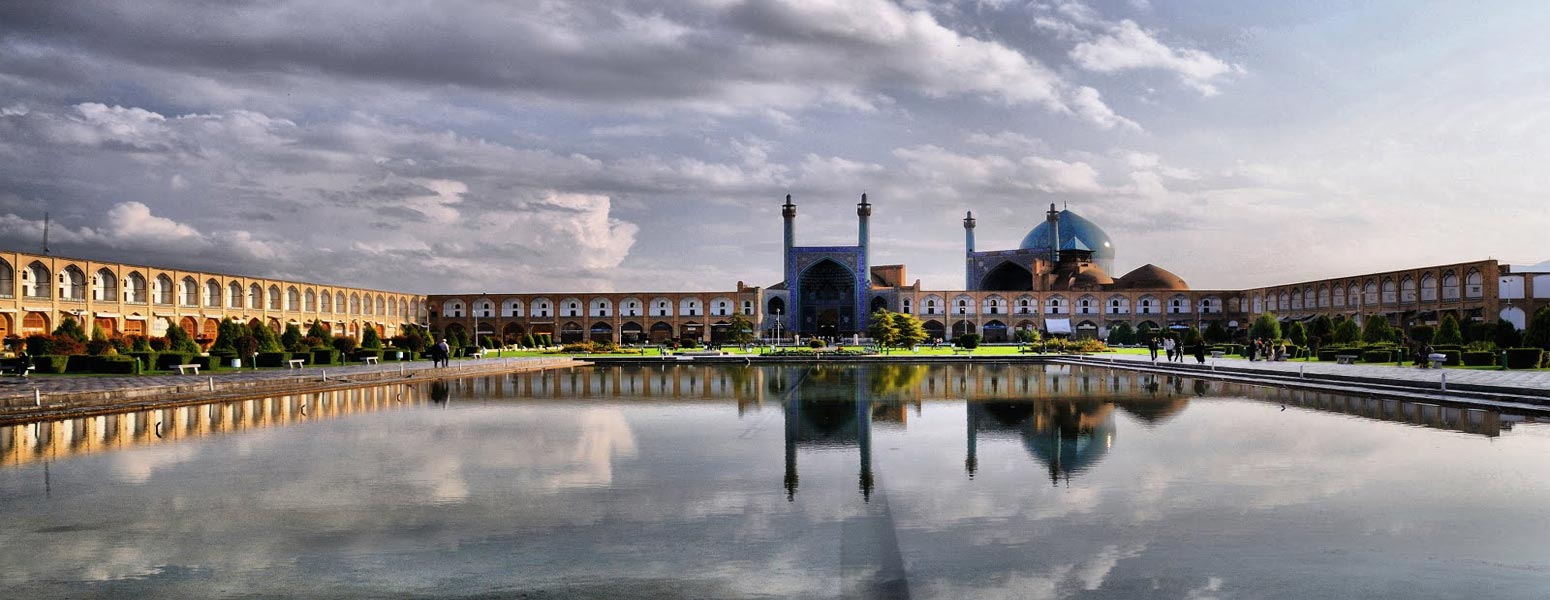
10. Pasargade (2004)
Pasargadae was the first dynastic capital of the Achaemenid Empire founded by Cyrus II the Great in Pars homeland of the Persians in the 6th century BC. Its palaces gardens and the mausoleum of Cyrus are outstanding examples of the first phase of royal Achaemenid art and architecture and exceptional testimonies of Persian civilization.

11. Persepolis (1979)
Persepolis was an ancient ceremonial capital of the second Iranian dynasty the Achaemenid Empire. Archaeological evidence suggests that the earliest remains of Persepolis date from around 518 BC. It was Darius the Great who built the terrace and the great palaces.The surviving ruins of Persepolis today are a mere shadow of Persepolis' former glory. The importance and quality of the monumental ruins make it a unique archaeological site.

12. Sassanid Archaeological Landscape of Fars Region (2018)
The eight archaeological sites situated in three geographical areas in the southeast of Fars Province: Firuzabad, Bishapur and Sarvestan. The fortified structures, palaces and city plans date back to the earliest and latest times of the Sassanian Empire, which stretched across the region from 224 to 658 CE. Among these sites is the capital built by the founder of the dynasty, Ardashir Papakan, as well as a city and architectural structures of his successor, Shapur I. The archaeological landscape reflects the optimized utilization of natural topography and bears witness to the influence of Achaemenid and Parthian cultural traditions and of Roman art, which had a significant impact on the architecture of the Islamic era.
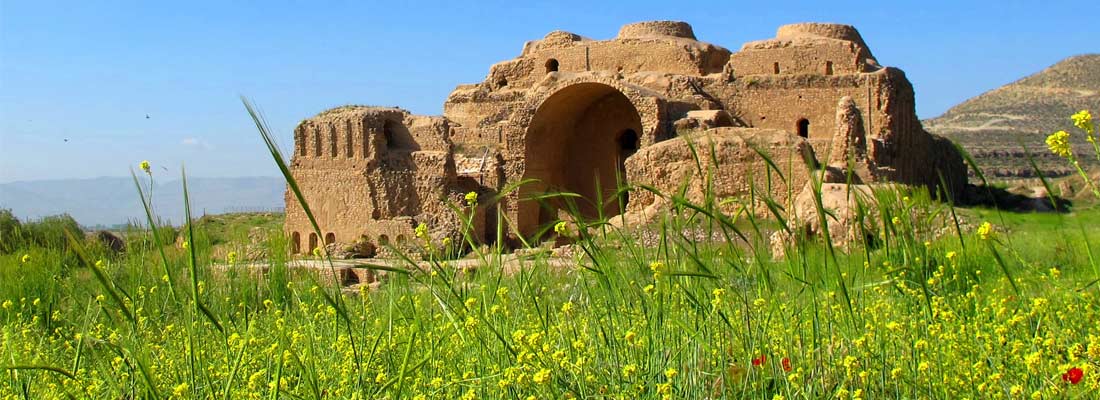
13. Shahr-i Sokhta (2014)
Shahr-i Sokhta, meaning ‘Burnt City’, is located at the junction of Bronze Age trade routes crossing the Iranian plateau. The remains of the mudbrick city represent the emergence of the first complex societies in eastern Iran. Founded around 3200 BC, it was populated during four main periods up to 1800 BC, during which time there developed several distinct areas within the city: those where monuments were built, and separate quarters for housing, burial and manufacture. Diversions in water courses and climate change led to the eventual abandonment of the city in the early second millennium. The structures, burial grounds and large number of significant artefacts unearthed there, and their well-preserved state due to the dry desert climate, make this site a rich source of information regarding the emergence of complex societies and contacts between them in the third millennium BC.
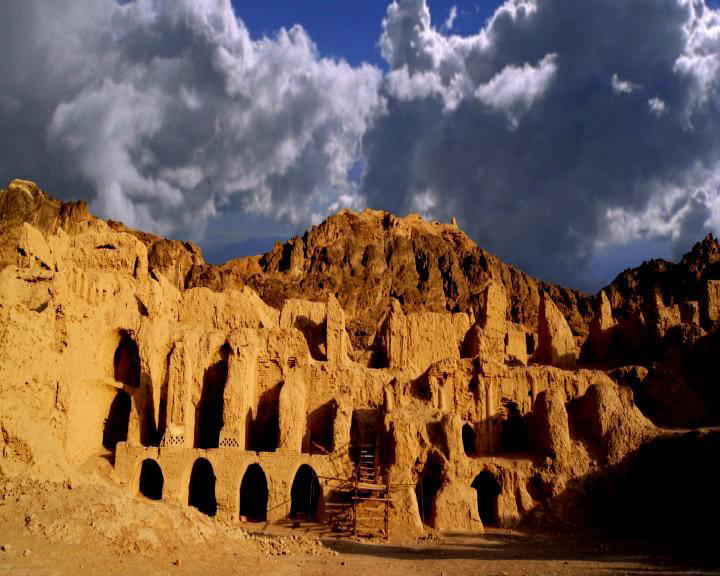
14. Sheikh Safi al-din Khanegah and Shrine Ensemble in Ardabil (2010 )
Built between the beginning of the 16th century and the end of the 18th century, this place of spiritual retreat in the Sufi tradition uses Iranian traditional architectural forms to maximize use of available space to accommodate a variety of functions (including a library, a mosque, a school, mausolea, a cistern, a hospital, kitchens, a bakery, and some offices). It incorporates a route to reach the shrine of the Sheikh divided into seven segments, which mirror the seven stages of Sufi mysticism, separated by eight gates, which represent the eight attitudes of Sufism. The ensemble includes well-preserved and richly ornamented facades and interiors, with a remarkable collection of antique artefacts. It constitutes a rare ensemble of elements of medieval Islamic architecture.
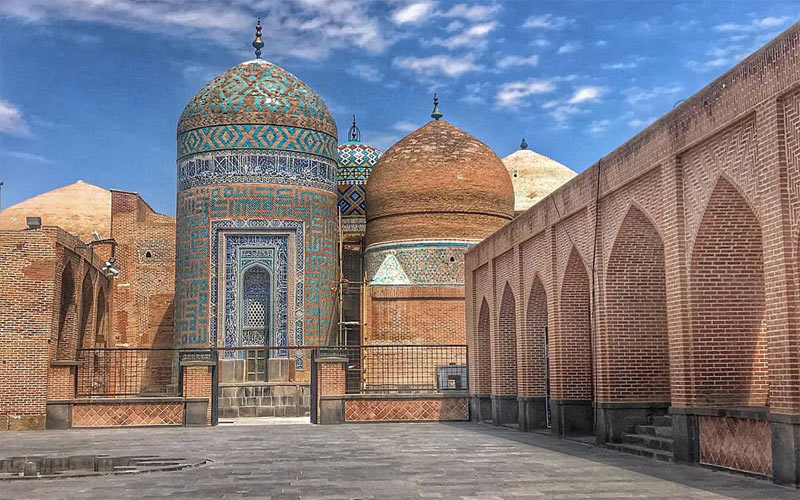
15. Shushtar Historical Hydraulic System (2009)
Shushtar, Historical Hydraulic System, inscribed as a masterpiece of creative genius, can be traced back to Darius the Great in the 5th century B.C. It involved the creation of two main diversion canals on the river Kârun one of which, Gargar canal, is still in use providing water to the city of Shushtar via a series of tunnels that supply water to mills. It forms a spectacular cliff from which water cascades into a downstream basin. It then enters the plain situated south of the city where it has enabled the planting of orchards and farming over an area of 40,000 ha. known as Mianâb (Paradise). The property has an ensemble of remarkable sites including the Salâsel Castel, the operation centre of the entire hydraulic system, the tower where the water level is measured, damns, bridges, basins and mills. It bears witness to the know-how of the Elamites and Mesopotamians as well as more recent Nabatean expertise and Roman building influence.
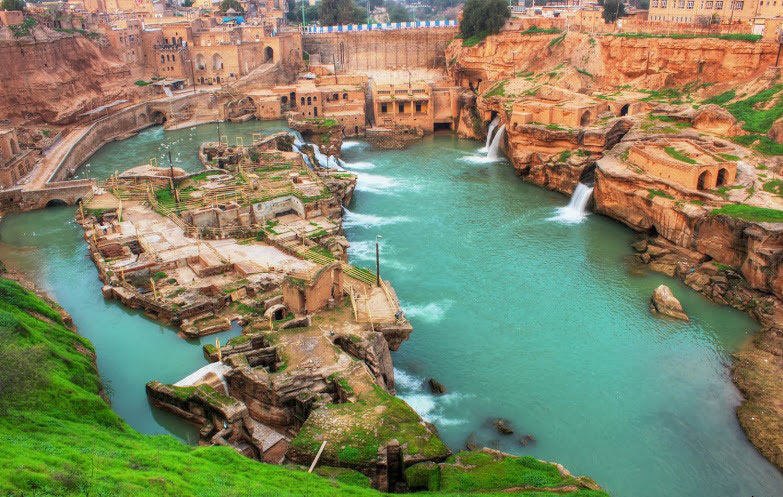
16. Soltaniyeh (2005)
The mausoleum of Oljaytu was constructed in 1302–12 in the city of Soltaniyeh, the capital of the Ilkhanid dynasty, which was founded by the Mongols. Situated in the province of Zanjan, Soltaniyeh is one of the outstanding examples of the achievements of Persian architecture and a key monument in the development of its Islamic architecture. The octagonal building is crowned with a 50 m tall dome covered in turquoise-blue faience and surrounded by eight slender minarets. It is the earliest existing example of the double-shelled dome in Iran. The mausoleum’s interior decoration is also outstanding and scholars such as A.U. Pope have described the building as ‘anticipating the Taj Mahal’.
.jpg)
17. Susa (2015)
Located in the south-west of Iran, in the lower Zagros Mountains, the property encompasses a group of archaeological mounds rising on the eastern side of the Shavur River, as well as Ardeshir’s palace, on the opposite bank of the river. The excavated architectural monuments include administrative, residential and palatial structures. Susa contains several layers of superimposed urban settlements in a continuous succession from the late 5th millennium BCE until the 13th century CE. The site bears exceptional testimony to the Elamite, Persian and Parthian cultural traditions, which have largely disappeared.
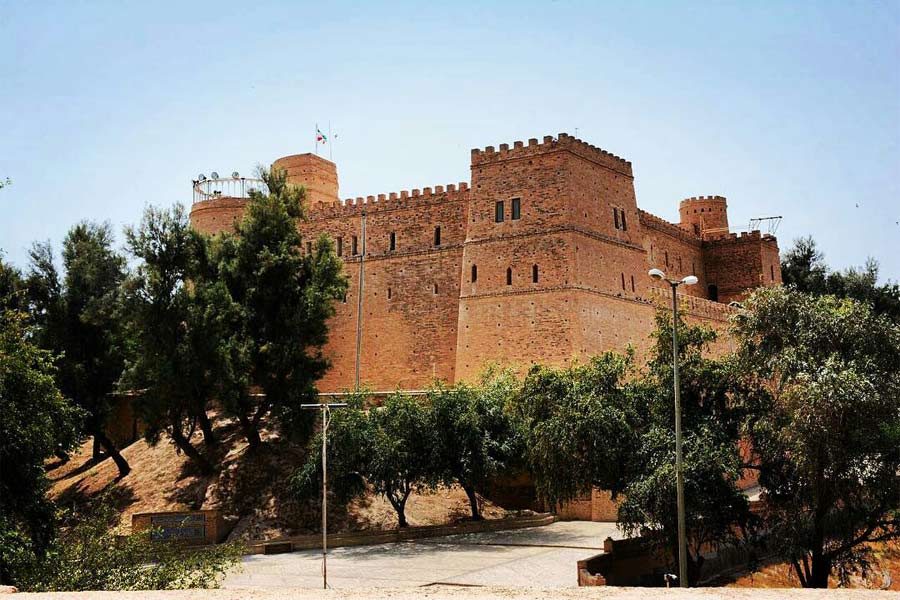
18. Tabriz Historic Bazaar Complex (2010)
Tabriz has been a place of cultural exchange since antiquity and its historic bazaar complex is one of the most important commercial centres on the Silk Road. Tabriz Historic Bazaar Complex consists of a series of interconnected, covered, brick structures, buildings, and enclosed spaces for different functions. Tabriz and its Bazaar were already prosperous and famous in the 13th century, when the town, in the province of Eastern Azerbaijan, became the capital city of the Safavid kingdom. The city lost its status as capital in the 16th century, but remained important as a commercial hub until the end of the 18th century, with the expansion of Ottoman power. It is one of the most complete examples of the traditional commercial and cultural system of Iran.
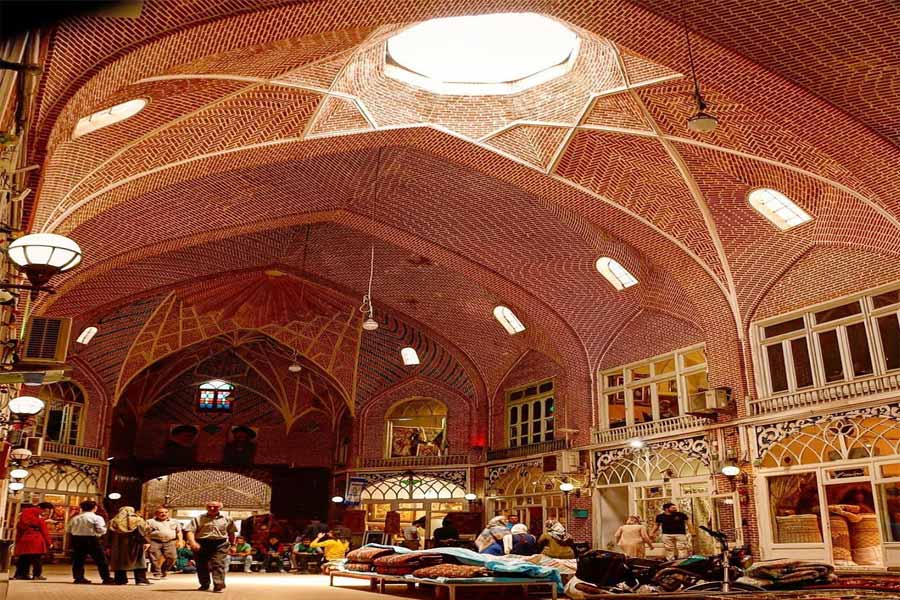
19. Takht-e Soleyman (2003)
The archaeological site of Takht-e Soleyman, in north-western Iran, is situated in a valley set in a volcanic mountain region. The site includes the principal Zoroastrian sanctuary partly rebuilt in the Ilkhanid (Mongol) period (13th century) as well as a temple of the Sasanian period (6th and 7th centuries) dedicated to Anahita. The site has important symbolic significance. The designs of the fire temple, the palace and the general layout have strongly influenced the development of Islamic architecture.
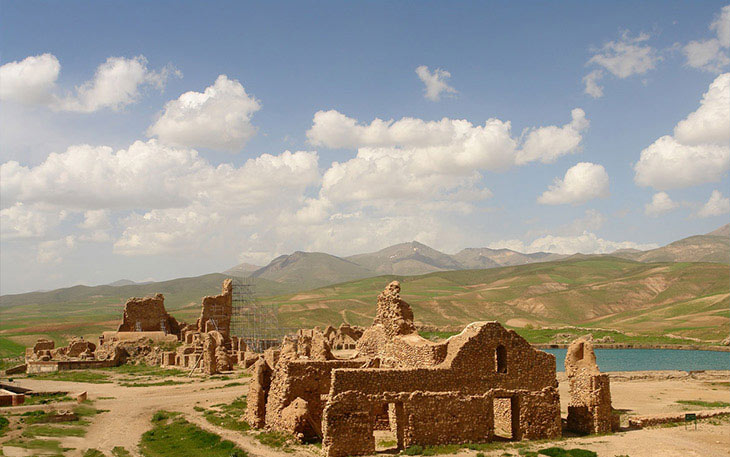
20. Tchogha Zanbil (1979)
The ruins of the holy city of the Kingdom of Elam, surrounded by three huge concentric walls, are found at Tchogha Zanbil. Founded c. 1250 B.C., the city remained unfinished after it was invaded by Ashurbanipal, as shown by the thousands of unused bricks left at the site.
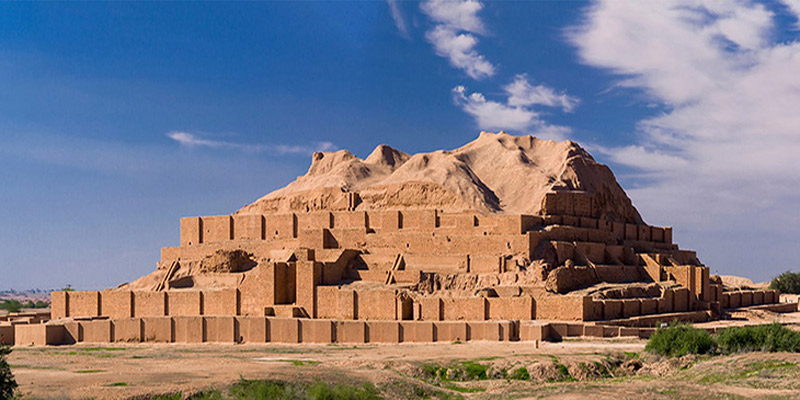
21. The Persian Garden (2011)
The property includes nine gardens in as many provinces. They exemplify the diversity of Persian garden designs that evolved and adapted to different climate conditions while retaining principles that have their roots in the times of Cyrus the Great, 6th century BC. Always divided into four sectors, with water playing an important role for both irrigation and ornamentation, the Persian garden was conceived to symbolize Eden and the four Zoroastrian elements of sky, earth, water and plants. These gardens, dating back to different periods since the 6th century BC, also feature buildings, pavilions and walls, as well as sophisticated irrigation systems. They have influenced the art of garden design as far as India and Spain.
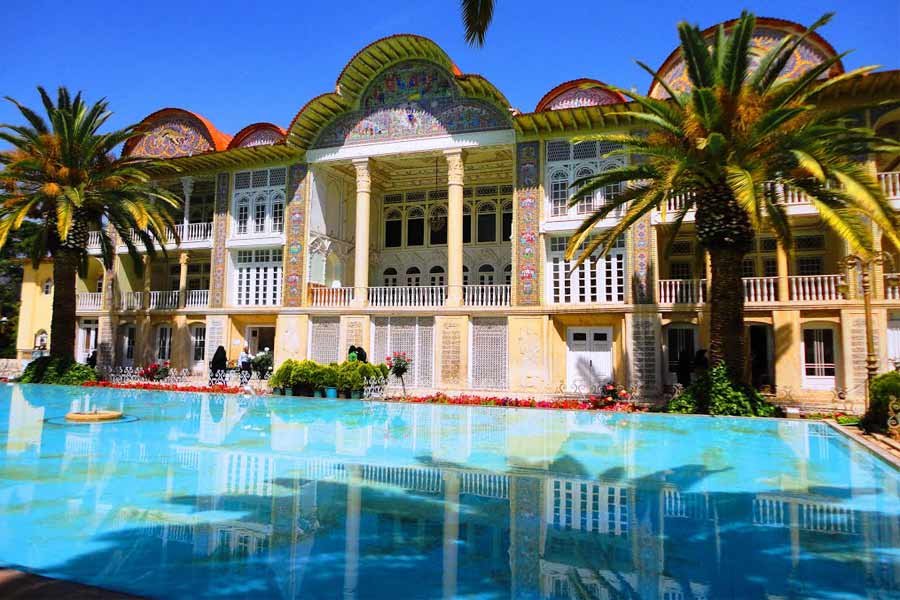
22. The Persian Qanat (2016)
Throughout the arid regions of Iran, agricultural and permanent settlements are supported by the ancient qanat system of tapping alluvial aquifers at the heads of valleys and conducting the water along underground tunnels by gravity, often over many kilometres. The eleven qanats representing this system include rest areas for workers, water reservoirs and watermills. The traditional communal management system still in place allows equitable and sustainable water sharing and distribution. The qanats provide exceptional testimony to cultural traditions and civilizations in desert areas with an arid climate.
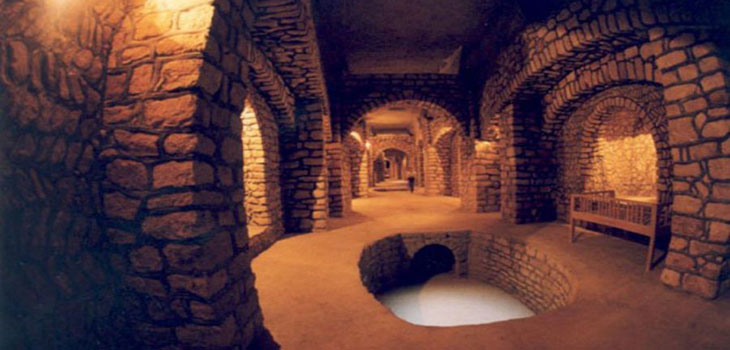
23. Cultural Landscape of Hawraman/Uramanat (2021)
The remote and mountainous landscape of Hawraman/Uramanat bears testimony to the traditional culture of the Hawrami people, an agropastoral Kurdish tribe that has inhabited the region since about 3000 BCE. The property, at the heart of the Zagros Mountains in the provinces of Kurdistan and Kermanshah along the western border of Iran, encompasses two components: the Central-Eastern Valley (Zhaverud and Takht, in Kurdistan Province); and the Western Valley (Lahun, in Kermanshah Province). The mode of human habitation in these two valleys has been adapted over millennia to the rough mountainous environment. Tiered steep-slope planning and architecture, gardening on dry-stone terraces, livestock breeding, and seasonal vertical migration are among the distinctive features of the local culture and life of the semi-nomadic Hawrami people who dwell in lowlands and highlands during different seasons of each year. Their uninterrupted presence in the landscape, which is also characterized by exceptional biodiversity and endemism, is evidenced by stone tools, caves and rock shelters, mounds, remnants of permanent and temporary settlement sites, and workshops, cemeteries, roads, villages, castles, and more. The 12 villages included in the property illustrate the Hawrami people’s evolving responses to the scarcity of productive land in their mountainous environment through the millennia.
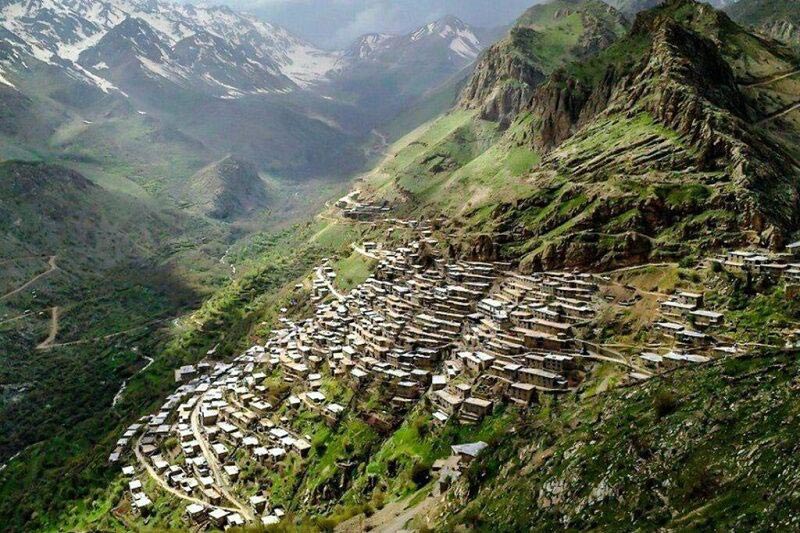
24. Trans-Iranian Railway (2021)
The Trans-Iranian Railway connects the Caspian Sea in the northeast with the Persian Gulf in the southwest crossing two mountain ranges as well as rivers, highlands, forests and plains, and four different climatic areas. Started in 1927 and completed in 1938, the 1,394-kilometre-long railway was designed and executed in a successful collaboration between the Iranian government and 43 construction contractors from many countries. The railway is notable for its scale and the engineering works it required to overcome steep routes and other difficulties. Its construction involved extensive mountain cutting in some areas, while the rugged terrain in others dictated the construction of 174 large bridges, 186 small bridges and 224 tunnels, including 11 spiral tunnels. Unlike most early railway projects, construction of the Trans-Iranian Railway was funded by national taxes to avoid foreign investment and control.
.jpg)
25. Persian Caravanserai
Caravanserais were roadside stops providing shelter, food and water to caravans, pilgrims and other travelers. Routes and caravanserai locations were determined by the presence of water resources, geographic features, and security concerns. The fifty-four caravanserais of this property represent only a small number of the many caravanserais built on the ancient roads of Iran. They are considered Iran's most influential and opulent examples, exhibiting a wide range of architectural styles, fashions, adaptation to climatic conditions and building materials, spread over thousands of kilometers and built over several centuries. Together, they illustrate the evolution and network of caravanserais in Iran at different periods of history.
Read more about Persian Caravanserais
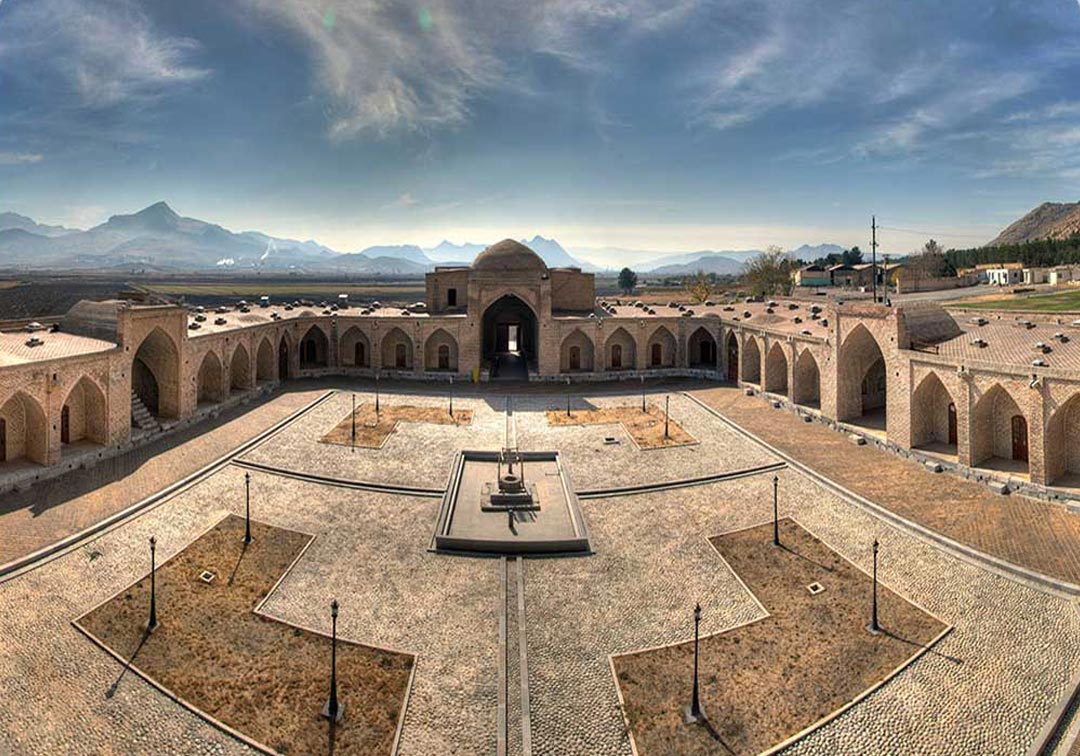
Natural Sites (02)
01. Lut Desert (2016)
The Lut Desert, or Dasht-e-Lut, is located in the south-east of the country. Between June and October, this arid subtropical area is swept by strong winds, which transport sediment and cause aeolian erosion on a colossal scale. Consequently, the site presents some of the most spectacular examples of aeolian yardang landforms (massive corrugated ridges). It also contains extensive stony deserts and dune fields. The property represents an exceptional example of ongoing geological processes.
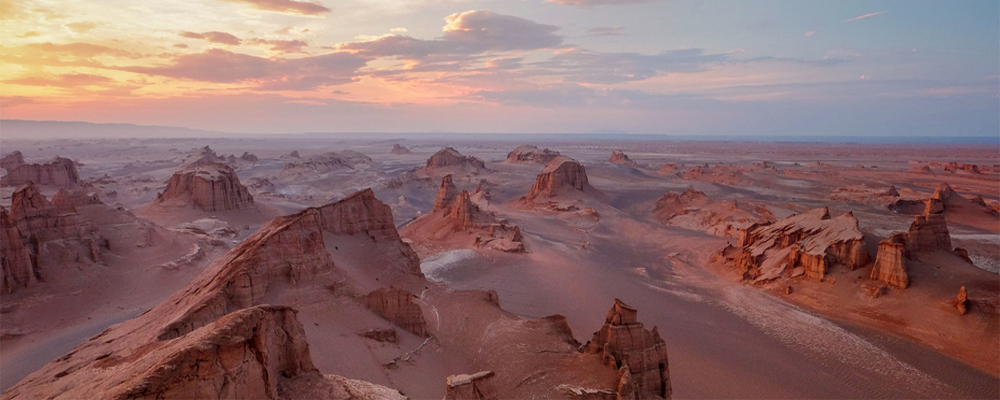
02. Hyrcanian Forests (2019)
Hyrcanian forests form a unique forested massif that stretches 850 km along the southern coast of the Caspian Sea. The history of these broad-leaved forests dates back 25 to 50 million years, when they covered most of this Northern Temperate region. These ancient forest areas retreated during the Quaternary glaciations and then expanded again as the climate became milder. Their floristic biodiversity is remarkable: 44% of the vascular plants known in Iran are found in the Hyrcanian region, which only covers 7% of the country. To date, 180 species of birds typical of broad-leaved temperate forests and 58 mammal species have been recorded, including the iconic Persian Leopard (Panthera pardus tulliana). Due to the high humid climate and suitable soil, it has a high production capacity. The forest is home to 296 bird species and 98 mammals. The main trees and shrub species in the region are :
Fagus Orientalis
Buxus hyrcana
Fagus Orientalis
Buxus hyrcana
Carpinus betulus
Parrotia Persica
Quercus castaneifolia
Pterocarya fraxinifolia
Alnus subcordata
Zelkova carpinifolia
Alnus glutinosa
Diospyros
Fraxinus excelsior
Carpinus orientalis
Tilia begonefolia
Carpinus schuschaensis
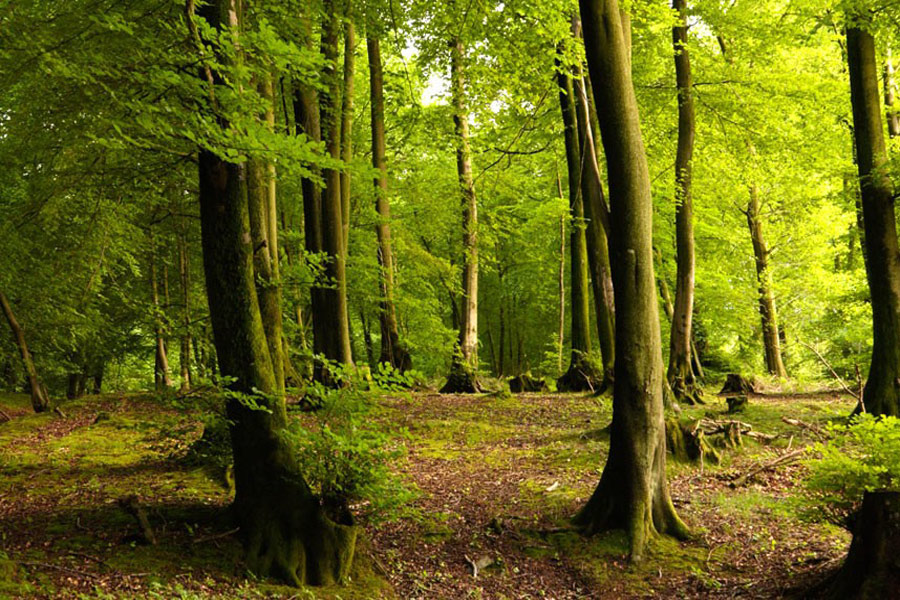
UNESCO IRAN: Useful Information
UNESCO (United Nations Educational, Scientific and Cultural Organization)
Founded in 1945, this specialized agency is responsible for coordinating international cooperation in education, science, culture and communication.
UNESCO World Heritage Sites in Iran
These are the sites in Iran that are recognized by UNESCO as world heritage sites as they play important roles in building the country’s cultural and national heritage.
How World Heritage Sites are Determined
World Heritage Sites are determined based on their outstanding universal value. To be listed, a place must meet at least 1 out of the 10 criteria set by UNESCO.

Iranian Sites registered in UNESCO
Cultural Sites (25)
1. Armenian Monastic Ensemble (2008)
It is located 15 Km northwest of Julfa (Northwest of Iran) in a deep canyon along the Aras River on the Iranian side of the border between Azerbaijan and Iran. This site protects the rich culture of Armenian Christians. It was built in the 9th century and was rebuilt in the Safavid era after several earthquakes damaged it.

2. Bam and its cultural Landscape (2004)
Bam is the world's largest mud brick building near the city of Bam in Kerman province in southeastern Iran and its Cultural Landscape is an outstanding example of a Central Asian trading settlement. The town had its heyday from the 7th to 11th centuries. The ancient citadel of Arg-e Bam probably has a history dating back around 2000 years ago but most buildings were built during the Safavid dynasty Bam was almost completely destroyed in an earthquake on December 26 2003.

3. Bisotun (2006)
It is located along a historical trade route in the Kermanshah Province of Iran. Its primary monument is the Bisotun Inscription made in 521 BC by Darius I the Great when he conquered the Persian throne. The inscription is written in 3 languages: Elamite Babylonian and Old Persian. It is to cuneiform script what the Rosetta Stone is to Egyptian hieroglyphs: the document most crucial in the decipherment of a previously lost script. A British army officer Sir Henry Rawlinson had the inscription transcribed in two parts in 1835 and 1843.

4. Cultural Landscape of Maymand (2015)
Meymand is a very ancient village which is located near Shahr-e Babak city in Kerman Province Iran.The Cultural Landscape of Maymand covers a dry desert valley in Central Iran which is home to semi-nomadic people. They practice a three phase transhumance system. In winter they live in troglodytic houses carved out of soft stone rocks. The designated area contains houses animal shelters water collection points agro-pastoral systems and rock-art.

5. Golestan Palace (2013)
Golestan Palace Tehran relic of a historic palace residence of the kings of the Qajar dynasty and the most beautiful and oldest buildings in the capital of the bicentenary of the counts. The palace buildings were built at different times. Its name is derived from the Hall of Golestan in building output.The site comprises 8 palace complexes around a garden. Notable features include: Marble Throne (Takht-e marmar)Hoze Khaneh a summer chamber with cooling systemTalar-e Aineh (Hall of Mirrors)Shams-ol-Emareh (Edifice of the Sun) Several museums.

6. Gonbade Qabus (2012)
Gonbad-e Qabus is a monumental tomb tower and is located in Gonbad-e Qabus city Golestan province in north of iran.The architectural style is a secret way and the building is one of the world's tallest brick tower all over the world . The 53 metres high tower was constructed using unglazed fired bricks. Its form is cylindrical with a conical roof and standing on a stellar plan. It became the prototype for the construction of tomb towers in the history of Islamic Architecture. The tower is the only part that remains of the historic town of Jorjan. It stands on a domed hill in a park in the center of the current city Gonbad-e Qabus.

7. Historic City of Yazd (2017)
The City of Yazd is located in the middle of the Iranian plateau, 270 km southeast of Isfahan, close to the Spice and Silk Roads. It bears living testimony to the use of limited resources for survival in the desert. Water is supplied to the city through a qanat system developed to draw underground water. The earthen architecture of Yazd has escaped the modernization that destroyed many traditional earthen towns, retaining its traditional districts, the qanat system, traditional houses, bazars, hammams, mosques, synagogues, Zoroastrian temples and the historic garden of Dolat-abad.

8. Masjede Jame of Isfahan (2012)
Masjed-e Jame of Isfahan represents a condensed history of Iranian Architecture. It displays architectural styles of different periods in the country's Islamic architecture. The mosque was built in the four-iwan architectural style placing four gates face to face. It later became a prototype for mosque and dome design. Located in the historic centre of Isfahan it is the oldest Friday mosque in Iran. It was developed from the 9th century onwards.

9. Meidan Imam Isfahan (1979)
Meidan Imam Isfahan is one of the largest city squares in the world and Built by Shah Abbas I the Great at the beginning of the 17th century. The square is surrounded by important historical buildings from the Safavid era. The Shah Mosque is situated on the south side of this square. On the west side you can find Ali Qapu Palace. Sheikh Lotf Allah Mosque is situated on the eastern side of this square and the northern side opens into the Isfahan Grand Bazaar. They are an impressive testimony to the level of social and cultural life in Persia during the Safavid era.

10. Pasargade (2004)
Pasargadae was the first dynastic capital of the Achaemenid Empire founded by Cyrus II the Great in Pars homeland of the Persians in the 6th century BC. Its palaces gardens and the mausoleum of Cyrus are outstanding examples of the first phase of royal Achaemenid art and architecture and exceptional testimonies of Persian civilization.

11. Persepolis (1979)
Persepolis was an ancient ceremonial capital of the second Iranian dynasty the Achaemenid Empire. Archaeological evidence suggests that the earliest remains of Persepolis date from around 518 BC. It was Darius the Great who built the terrace and the great palaces.The surviving ruins of Persepolis today are a mere shadow of Persepolis' former glory. The importance and quality of the monumental ruins make it a unique archaeological site.

12. Sassanid Archaeological Landscape of Fars Region (2018)
The eight archaeological sites situated in three geographical areas in the southeast of Fars Province: Firuzabad, Bishapur and Sarvestan. The fortified structures, palaces and city plans date back to the earliest and latest times of the Sassanian Empire, which stretched across the region from 224 to 658 CE. Among these sites is the capital built by the founder of the dynasty, Ardashir Papakan, as well as a city and architectural structures of his successor, Shapur I. The archaeological landscape reflects the optimized utilization of natural topography and bears witness to the influence of Achaemenid and Parthian cultural traditions and of Roman art, which had a significant impact on the architecture of the Islamic era.

13. Shahr-i Sokhta (2014)
Shahr-i Sokhta, meaning ‘Burnt City’, is located at the junction of Bronze Age trade routes crossing the Iranian plateau. The remains of the mudbrick city represent the emergence of the first complex societies in eastern Iran. Founded around 3200 BC, it was populated during four main periods up to 1800 BC, during which time there developed several distinct areas within the city: those where monuments were built, and separate quarters for housing, burial and manufacture. Diversions in water courses and climate change led to the eventual abandonment of the city in the early second millennium. The structures, burial grounds and large number of significant artefacts unearthed there, and their well-preserved state due to the dry desert climate, make this site a rich source of information regarding the emergence of complex societies and contacts between them in the third millennium BC.

14. Sheikh Safi al-din Khanegah and Shrine Ensemble in Ardabil (2010 )
Built between the beginning of the 16th century and the end of the 18th century, this place of spiritual retreat in the Sufi tradition uses Iranian traditional architectural forms to maximize use of available space to accommodate a variety of functions (including a library, a mosque, a school, mausolea, a cistern, a hospital, kitchens, a bakery, and some offices). It incorporates a route to reach the shrine of the Sheikh divided into seven segments, which mirror the seven stages of Sufi mysticism, separated by eight gates, which represent the eight attitudes of Sufism. The ensemble includes well-preserved and richly ornamented facades and interiors, with a remarkable collection of antique artefacts. It constitutes a rare ensemble of elements of medieval Islamic architecture.

15. Shushtar Historical Hydraulic System (2009)
Shushtar, Historical Hydraulic System, inscribed as a masterpiece of creative genius, can be traced back to Darius the Great in the 5th century B.C. It involved the creation of two main diversion canals on the river Kârun one of which, Gargar canal, is still in use providing water to the city of Shushtar via a series of tunnels that supply water to mills. It forms a spectacular cliff from which water cascades into a downstream basin. It then enters the plain situated south of the city where it has enabled the planting of orchards and farming over an area of 40,000 ha. known as Mianâb (Paradise). The property has an ensemble of remarkable sites including the Salâsel Castel, the operation centre of the entire hydraulic system, the tower where the water level is measured, damns, bridges, basins and mills. It bears witness to the know-how of the Elamites and Mesopotamians as well as more recent Nabatean expertise and Roman building influence.

16. Soltaniyeh (2005)
The mausoleum of Oljaytu was constructed in 1302–12 in the city of Soltaniyeh, the capital of the Ilkhanid dynasty, which was founded by the Mongols. Situated in the province of Zanjan, Soltaniyeh is one of the outstanding examples of the achievements of Persian architecture and a key monument in the development of its Islamic architecture. The octagonal building is crowned with a 50 m tall dome covered in turquoise-blue faience and surrounded by eight slender minarets. It is the earliest existing example of the double-shelled dome in Iran. The mausoleum’s interior decoration is also outstanding and scholars such as A.U. Pope have described the building as ‘anticipating the Taj Mahal’.
.jpg)
17. Susa (2015)
Located in the south-west of Iran, in the lower Zagros Mountains, the property encompasses a group of archaeological mounds rising on the eastern side of the Shavur River, as well as Ardeshir’s palace, on the opposite bank of the river. The excavated architectural monuments include administrative, residential and palatial structures. Susa contains several layers of superimposed urban settlements in a continuous succession from the late 5th millennium BCE until the 13th century CE. The site bears exceptional testimony to the Elamite, Persian and Parthian cultural traditions, which have largely disappeared.

18. Tabriz Historic Bazaar Complex (2010)
Tabriz has been a place of cultural exchange since antiquity and its historic bazaar complex is one of the most important commercial centres on the Silk Road. Tabriz Historic Bazaar Complex consists of a series of interconnected, covered, brick structures, buildings, and enclosed spaces for different functions. Tabriz and its Bazaar were already prosperous and famous in the 13th century, when the town, in the province of Eastern Azerbaijan, became the capital city of the Safavid kingdom. The city lost its status as capital in the 16th century, but remained important as a commercial hub until the end of the 18th century, with the expansion of Ottoman power. It is one of the most complete examples of the traditional commercial and cultural system of Iran.

19. Takht-e Soleyman (2003)
The archaeological site of Takht-e Soleyman, in north-western Iran, is situated in a valley set in a volcanic mountain region. The site includes the principal Zoroastrian sanctuary partly rebuilt in the Ilkhanid (Mongol) period (13th century) as well as a temple of the Sasanian period (6th and 7th centuries) dedicated to Anahita. The site has important symbolic significance. The designs of the fire temple, the palace and the general layout have strongly influenced the development of Islamic architecture.

20. Tchogha Zanbil (1979)
The ruins of the holy city of the Kingdom of Elam, surrounded by three huge concentric walls, are found at Tchogha Zanbil. Founded c. 1250 B.C., the city remained unfinished after it was invaded by Ashurbanipal, as shown by the thousands of unused bricks left at the site.

21. The Persian Garden (2011)
The property includes nine gardens in as many provinces. They exemplify the diversity of Persian garden designs that evolved and adapted to different climate conditions while retaining principles that have their roots in the times of Cyrus the Great, 6th century BC. Always divided into four sectors, with water playing an important role for both irrigation and ornamentation, the Persian garden was conceived to symbolize Eden and the four Zoroastrian elements of sky, earth, water and plants. These gardens, dating back to different periods since the 6th century BC, also feature buildings, pavilions and walls, as well as sophisticated irrigation systems. They have influenced the art of garden design as far as India and Spain.

22. The Persian Qanat (2016)
Throughout the arid regions of Iran, agricultural and permanent settlements are supported by the ancient qanat system of tapping alluvial aquifers at the heads of valleys and conducting the water along underground tunnels by gravity, often over many kilometres. The eleven qanats representing this system include rest areas for workers, water reservoirs and watermills. The traditional communal management system still in place allows equitable and sustainable water sharing and distribution. The qanats provide exceptional testimony to cultural traditions and civilizations in desert areas with an arid climate.

23. Cultural Landscape of Hawraman/Uramanat (2021)
The remote and mountainous landscape of Hawraman/Uramanat bears testimony to the traditional culture of the Hawrami people, an agropastoral Kurdish tribe that has inhabited the region since about 3000 BCE. The property, at the heart of the Zagros Mountains in the provinces of Kurdistan and Kermanshah along the western border of Iran, encompasses two components: the Central-Eastern Valley (Zhaverud and Takht, in Kurdistan Province); and the Western Valley (Lahun, in Kermanshah Province). The mode of human habitation in these two valleys has been adapted over millennia to the rough mountainous environment. Tiered steep-slope planning and architecture, gardening on dry-stone terraces, livestock breeding, and seasonal vertical migration are among the distinctive features of the local culture and life of the semi-nomadic Hawrami people who dwell in lowlands and highlands during different seasons of each year. Their uninterrupted presence in the landscape, which is also characterized by exceptional biodiversity and endemism, is evidenced by stone tools, caves and rock shelters, mounds, remnants of permanent and temporary settlement sites, and workshops, cemeteries, roads, villages, castles, and more. The 12 villages included in the property illustrate the Hawrami people’s evolving responses to the scarcity of productive land in their mountainous environment through the millennia.

24. Trans-Iranian Railway (2021)
The Trans-Iranian Railway connects the Caspian Sea in the northeast with the Persian Gulf in the southwest crossing two mountain ranges as well as rivers, highlands, forests and plains, and four different climatic areas. Started in 1927 and completed in 1938, the 1,394-kilometre-long railway was designed and executed in a successful collaboration between the Iranian government and 43 construction contractors from many countries. The railway is notable for its scale and the engineering works it required to overcome steep routes and other difficulties. Its construction involved extensive mountain cutting in some areas, while the rugged terrain in others dictated the construction of 174 large bridges, 186 small bridges and 224 tunnels, including 11 spiral tunnels. Unlike most early railway projects, construction of the Trans-Iranian Railway was funded by national taxes to avoid foreign investment and control.
.jpg)
25. Persian Caravanserai
Caravanserais were roadside stops providing shelter, food and water to caravans, pilgrims and other travelers. Routes and caravanserai locations were determined by the presence of water resources, geographic features, and security concerns. The fifty-four caravanserais of this property represent only a small number of the many caravanserais built on the ancient roads of Iran. They are considered Iran's most influential and opulent examples, exhibiting a wide range of architectural styles, fashions, adaptation to climatic conditions and building materials, spread over thousands of kilometers and built over several centuries. Together, they illustrate the evolution and network of caravanserais in Iran at different periods of history.
Read more about Persian Caravanserais

Natural Sites (02)
01. Lut Desert (2016)
The Lut Desert, or Dasht-e-Lut, is located in the south-east of the country. Between June and October, this arid subtropical area is swept by strong winds, which transport sediment and cause aeolian erosion on a colossal scale. Consequently, the site presents some of the most spectacular examples of aeolian yardang landforms (massive corrugated ridges). It also contains extensive stony deserts and dune fields. The property represents an exceptional example of ongoing geological processes.

02. Hyrcanian Forests (2019)
Hyrcanian forests form a unique forested massif that stretches 850 km along the southern coast of the Caspian Sea. The history of these broad-leaved forests dates back 25 to 50 million years, when they covered most of this Northern Temperate region. These ancient forest areas retreated during the Quaternary glaciations and then expanded again as the climate became milder. Their floristic biodiversity is remarkable: 44% of the vascular plants known in Iran are found in the Hyrcanian region, which only covers 7% of the country. To date, 180 species of birds typical of broad-leaved temperate forests and 58 mammal species have been recorded, including the iconic Persian Leopard (Panthera pardus tulliana). Due to the high humid climate and suitable soil, it has a high production capacity. The forest is home to 296 bird species and 98 mammals. The main trees and shrub species in the region are :
Fagus Orientalis
Buxus hyrcana
Fagus Orientalis
Buxus hyrcana
Carpinus betulus
Parrotia Persica
Quercus castaneifolia
Pterocarya fraxinifolia
Alnus subcordata
Zelkova carpinifolia
Alnus glutinosa
Diospyros
Fraxinus excelsior
Carpinus orientalis
Tilia begonefolia
Carpinus schuschaensis

Inbound Persia Tour and Travel Agency